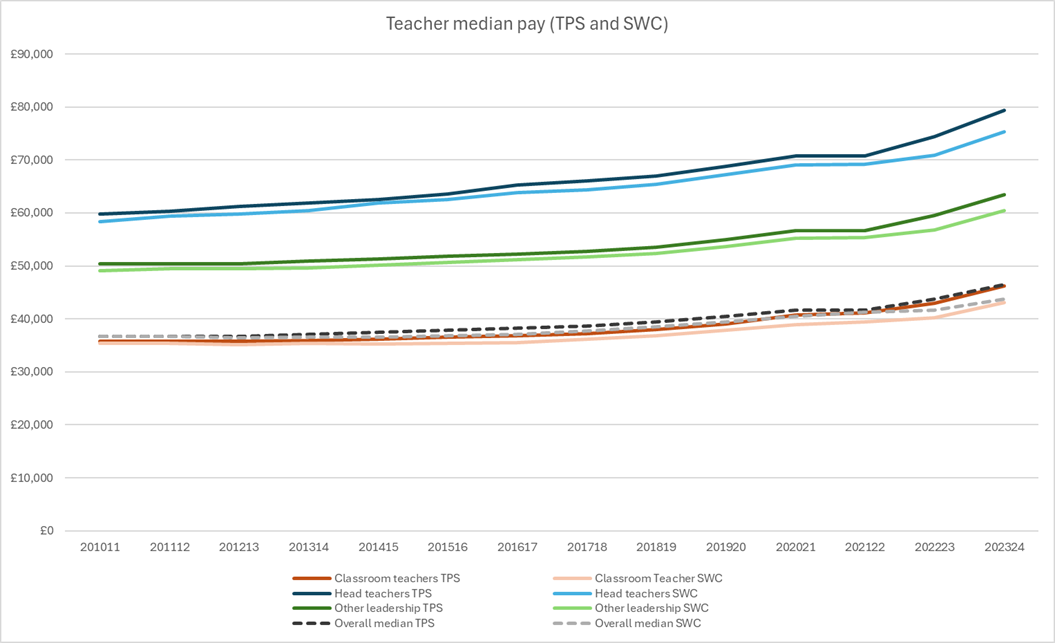The Teacher Pension Scheme (TPS) data is collected by the scheme administrator. The data is collected in the process of managing the contributions of teachers and their employers to their pensions.
Audited annual accounts for the Teacher Pension Scheme are published. The latest audited accounts are available for 2022-23 [1]. This publication is based on a more recent extract of the TPS data which has not yet been through the full audit process. The quality of this data should be treated with greater caution.
The TPS data covers teachers eligible for the Teachers Pensions Scheme, regardless of participation. This should ensure a high degree of coverage for the scope of this publication, of teachers in state-funded schools, including those who have opted out of the pension scheme. Exceptions will exist, such as teachers working in state-funded schools for more than 28 days, and so in scope of the School Workforce Census, but who are contracted through a teacher supply agency and so are ineligible for the TPS in their current employment.
Employers have reporting responsibilities that are clearly set out [2]. Submitted data is subjected to validation processes and returned to employers for corrective action where errors are identified. Employers must submit End of Year Certificates, which ensure agreement between the data submitted and the financial contributions, on behalf of both the employee and the employer, made to the scheme.
When backdated pay awards are agreed, data must be submitted to retrospectively update prior months with the correct salary at the new rate. This may not be addressed as completely for the most recent pay award as for prior years, but our choice of reference date at the start of December increases the likelihood that the initial data submission reflected the award.
Data used in this publication for academic year 2023/24 was extracted before the end of the financial year and with a short period between submission and extraction. Data is therefore likely to be subject to more missing data than data for earlier years, as some providers only submit data at the end of the financial year, while for providers submitting data monthly, omissions may have not yet been identified and rectified. It may also be subject to greater data quality issues, as corrective actions may remain outstanding, and end of year reconciliation is yet to take place.
The extract of TPS data used in this publication is considered provisional data. The TPS data remains subject to further submissions, revisions, and data cleaning between now and the next annual audited accounts publication. This process may not eliminate all input or data errors, including for prior years.
The School Workforce Census (SWC) data which we match TPS data to for this publication is collected by DfE and undergoes rigorous QA (see more detail here).
[1] Teachers' pension scheme: annual accounts 2022 to 2023 - GOV.UK (www.gov.uk) (opens in new tab)
[2] Guides | Employer help | Resources | Teachers' Pensions (teacherspensions.co.uk) (opens in new tab)
